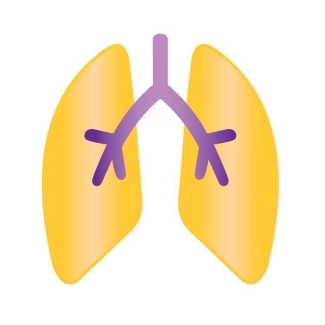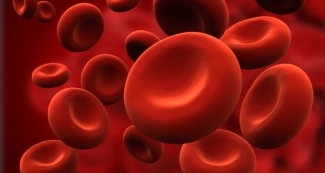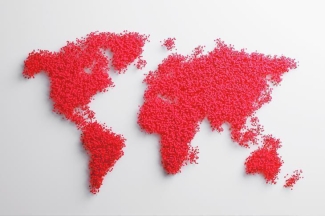
Paying it forward: Why we need YOU to give blood - Part 5
In this six-part series, Dr. Jeannie Callum, a hospital-based transfusion specialist, shares her real-life experience witnessing the impact of blood donation on patient lives. She provides some fascinating insight into blood transfusion, past and present, and emphasizes the need for male donors and why some donors may be safer for patients.
- Part 1: A miraculous gift, ready and waiting
- Part 2: Not your average bank
- Part 3: Blood type hype
- Part 4: Beyond matching ABO and Rh: Rare blood challenges and international cooperation
- Part 5: All blood is not the same
- Part 6: My own donation journey...
Science is just starting to grasp the fact that certain individuals make safer blood donors. In April 2004, a group of international transfusion experts convened in Toronto at a conference to decide what to do about blood from female donors that was causing serious (and sometimes fatal) transfusion reactions.
A woman’s immune system during pregnancy, even a pregnancy that lasts just a few months, detects the unborn baby’s foreign tissue and makes antibodies against them. These antigens are triggered by her partner’s uniquely different tissue type that he passes on to his progeny. After three pregnancies, a third of women have detectable antibodies. These antibodies are present in any blood that the woman donates. If the unfortunate recipient of this blood is genetically similar to the father of her children, a transfusion reaction might occur. This reaction could result in the recipient’s lungs filling with immune cells and fluid. The patient becomes profoundly short of breath and three-quarters of affected patients will need life-support for a few days until the reaction subsides. At the time of the 2004 conference, this reaction, termed TRALI or “transfusion-related acute lung injury”, was the leading cause of major complications and death from transfusion. The best estimate at that time was that 1 in every 5,000 recipients were affected.

In March 2001, the journal Transfusion published a provocative editorial titled, “Transfusion-related acute lung injury: femme fatale?” The editorial challenged the safety of how we use blood from female donors. Today, when I teach residents about this type of transfusion reaction, I stress that it is the donor that causes the reaction, and how important it is to report it to the blood bank.
At the conference, the transfusion medicine experts from the UK announced that they had already instituted changes to minimize the exposure of recipients to female plasma, the liquid part of the blood containing the dangerous antibodies. There was a bit of antagonism (and an audible gasp across an audience of hundreds of transfusion experts) towards the UK physicians. There was little scientific evidence that making these changes would decrease the rates of reactions. In transfusion medicine (and most other scientific disciplines), we don’t like to make change without evidence.
The pressure from the UK forced the other blood suppliers to follow suit. From that point on, plasma for transfusion was derived only from men. Another change was that plasma from female donors would not be added to platelet units. The blood centres did not throw out the female plasma, it was sent to blood product manufacturers to be used to make manufactured plasma products like immunoglobulin and albumin. You could manipulate away the dangers of donations from female donors with the manufacturing process. It turned out that the UK transfusion experts were right. It worked. The rates of this type of reaction across the world dropped by half.
New research, new questions
Dr. Dean Fergusson, a scientist from the Clinical Epidemiology Program of The Ottawa Hospital’s research institute, and his colleagues have looked even deeper into the impact of donor characteristics on patient outcomes. Recently, they looked at the outcomes of over 30,000 recipients receiving blood from over 80,000 donors and found a curious thing. In that hypothesis-generating study, blood from younger and female donors was associated with an increased risk of death of the recipient. The reasons are unclear but need to be urgently investigated if we are to have the best outcomes for our patients.
Women make up half of the red blood cell donors. To make blood transfusions safer, as much plasma as possible is removed through the manufacturing process. In Canada, less than a tablespoon of female plasma is left in the red cell unit. Is it possible that the harm from female red cells is from this small amount of plasma, or perhaps the tiny number of immune cells in the product, or perhaps there is something different about the red blood cells themselves? Is it possible that males are safer blood donors than women?
If females were not allowed to donate blood, twice as many males would have to donate blood. It would take decades for blood suppliers to figure out how to mobilize that many men to come out to donate blood. Currently, 36,000 red blood cells units are transfused every day in the US. Each unit comes from a different donor and half of them are female. The US has one of the highest donor participation rates with 10 per cent of eligible donors giving at least one pint each year. Canada scores very low on this metric at less than four per cent. And my city, Toronto, even lower at two per cent. Even with high participation rates in the US, relying on men alone seems impossible without a major shift in our attitude towards blood donation. It would be even more challenging in Canada. But we need to consider that recipient safety could be improved through relying more on male donors. The only way to know if it is safer is to do it.
Eligibility hurdles
Some of the men reading this article might be thinking “well, I can’t give blood even though I want to because the blood collection agency has deferred me.” Donors are deferred for lots of different reasons: travel to malaria risk areas, previous travel to the UK (risk of variant Creutzfeldt-Jakob), recent tattoos, and many other reasons. For decades, the regulators in Canada and most other countries had mandatory requirements that when a blood donor answered “yes” to the question about “men who have sex with men”, they had to be deferred indefinitely as a donor. In the scientific literature, the term is shortened to “MSM”. In 2013, the Canadian regulator shortened the deferral for MSM to five years. Then in June of 2016, the Canadian regulator allowed the blood collection facilities to move to just a one-year deferral after MSM exposure. This is a good start but we need to figure out how put some science behind the questions that the regulators require blood agencies to ask.
Canadian Blood Services and Hema-Quebec, the two blood collection agencies in Canada, have allocated $3 million in research funding (thanks to Health Canada) to allow scientists to figure this out. We need to be patient — the scientists will have to present solid scientific data to the regulator to allow change to the current one-year deferral. We also must ensure our recipients don’t lose confidence in the blood supply. We must never slip up — it has happened before in Canada — and it must never happen again.
Stay tuned: Part 6, titled "My own donation journey…" will be published soon. Look for it here on RED, October 18.
Canadian Blood Services – Driving world-class innovation
Through discovery, development and applied research, Canadian Blood Services drives world-class innovation in blood transfusion, cellular therapy and transplantation—bringing clarity and insight to an increasingly complex healthcare future. Our dedicated research team and extended network of partners engage in exploratory and applied research to create new knowledge, inform and enhance best practices, contribute to the development of new services and technologies, and build capacity through training and collaboration. Find out more about our research impact.
The opinions reflected in this post are those of the author and do not necessarily reflect the opinions of Canadian Blood Services nor do they reflect the views of Health Canada or any other funding agency.
Related blog posts
Paying it forward: Why we need YOU to give blood - Part 3 In this six-part series, Dr. Jeannie Callum, a hospital-based transfusion specialist, shares her real-life experience witnessing the impact of blood donation on patient lives. She provides some fascinating insight into blood transfusion, past...
In this six-part series, Dr. Jeannie Callum, a hospital-based transfusion specialist, shares her real-life experience witnessing the impact of blood donation on patient lives. She provides some fascinating insight into blood transfusion, past and present, and emphasizes the need for male donors and why some donors may be safer for patients. Read the complete series here.

